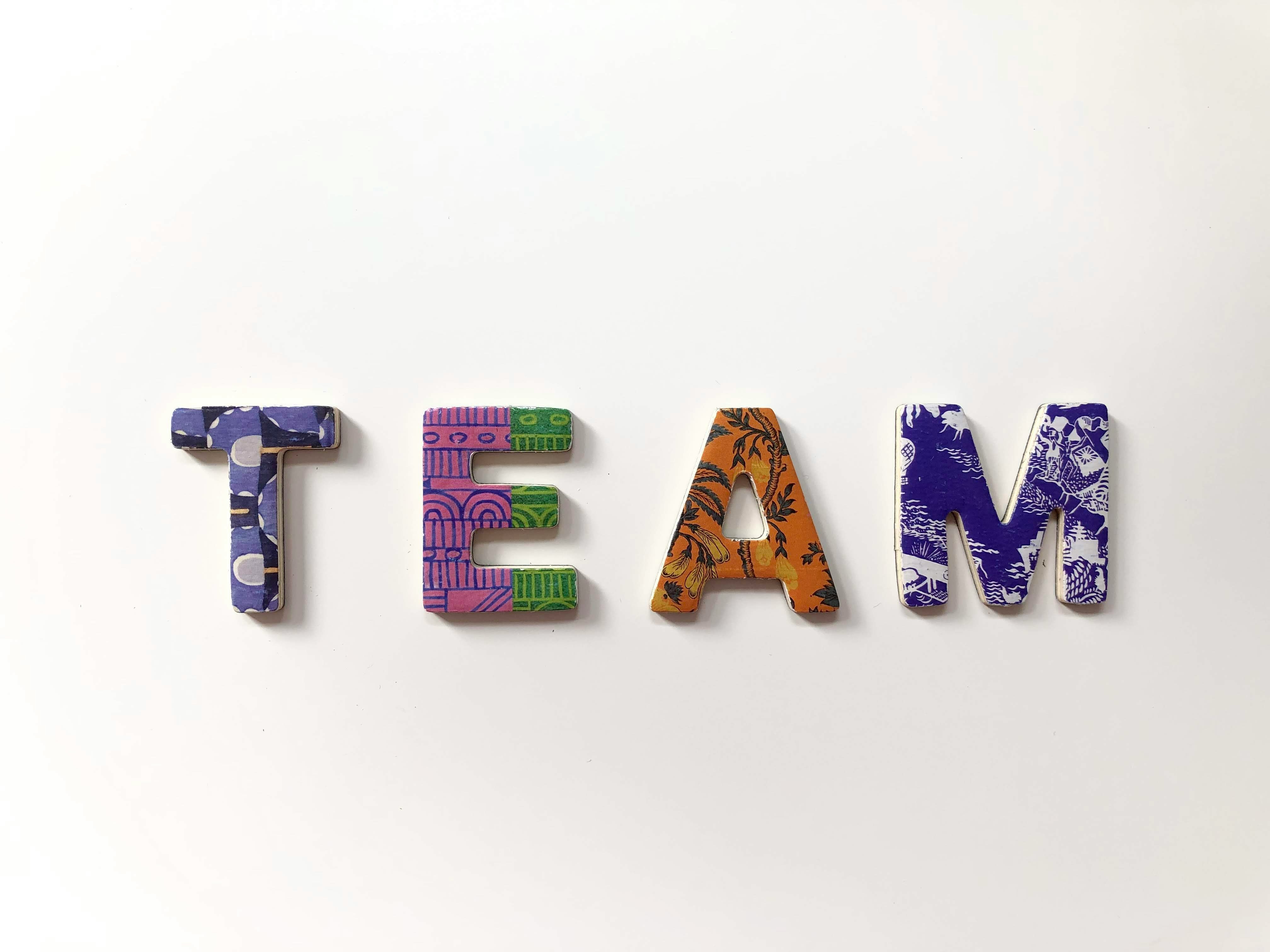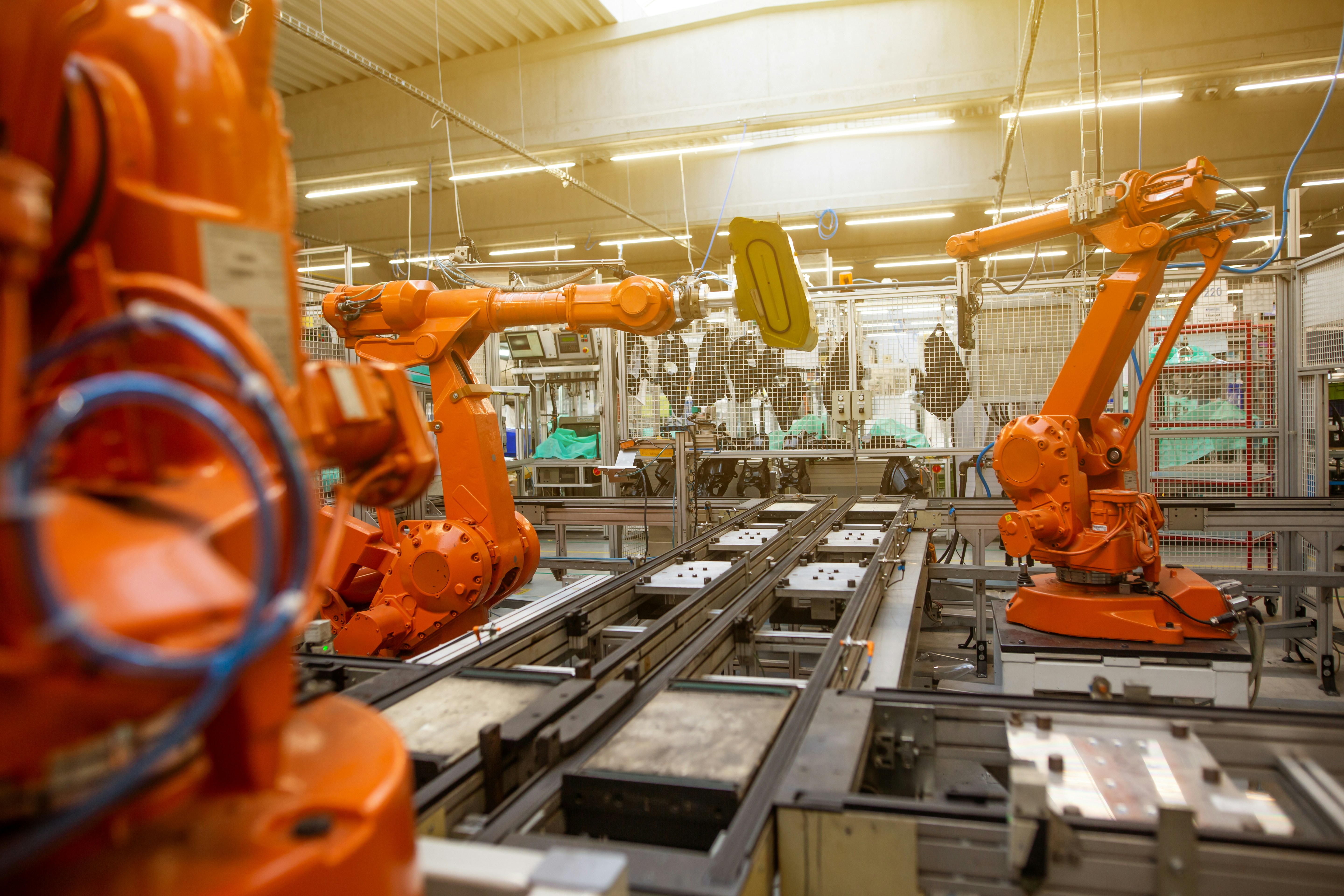
Robotics Team Structures Explained: Who Does What in a Modern Robotics Department
Robotics is transforming manufacturing, healthcare, logistics, agriculture, entertainment and more. In the UK, advances in robotics span autonomous mobile robots (AMRs), robotic arms, surgical robotics, drone systems, human-robot interaction, and collaborative robots (cobots). Building effective robotics systems requires not only strong hardware and software, but also finely coordinated teams with clear roles from research through deployment and maintenance.
If you’re a candidate applying for robotics roles or an employer hiring through RoboticsJobs.co.uk, this guide will help you understand who does what in a mature robotics department, how the lifecycle of a robotics product works, what skills and qualifications UK employers typically expect, what salaries look like, common challenges, and best practices for structuring teams that deliver.
Why Team Structure Is Important in Robotics
Robotics projects are inherently multidisciplinary. They integrate mechanical components, electronics, firmware, control theory, perception and software, system integration, user interfaces, safety, and deployment in real environments. The many moving parts require clear responsibility. Without structure, robotics teams risk delayed development, costly redesigns, difficulties in calibration, safety issues, brittle systems in field conditions, and slow iteration times. A well-designed team ensures consistency, reliability, safety, maintainability and faster time to market.
Core Roles in a Robotics Department
Below are the key roles you’ll often find—or ideally want—in a well-rounded robotics department. In smaller businesses some roles are combined; in large firms many are specialised.
Robotics Software Engineer
These engineers build the software stack: from perception, planning, localisation, motion control, to user interfaces.
What they do:
Implement algorithms for perception (e.g. computer vision, lidar, SLAM).
Build motion planning, path planning, obstacle avoidance and path following.
Create middleware or robot operating system (ROS) nodes, handle inter-process communication.
Ensure real-time constraints where needed.
Integrate with hardware drivers and firmware; collaborate with electronics and hardware teams.
Skills:
Proficiency in languages like C++, Python; ROS (Robot Operating System); experience in perception and sensor fusion; software architecture; real-time constraints; debugging tools; simulation.
Hardware Engineer (Mechanical / Electrical / Mechatronics)
Handles the physical aspects: design, fabrication, sensors, motors, actuators, packaging, power systems.
What they do:
Design mechanical structures, linkages, joints, chassis, kinematics.
Select sensors (camera, IMU, lidar, ultrasonic etc.), actuators, motors, encoders.
Electrical design: PCB design, cabling, power electronics.
Thermal, mechanical, and structural reliability; mechanical tolerances.
Collaborate with firmware and software teams to ensure hardware meets operational and environmental specs.
Skills:
Mechanical CAD, electronics design, motor control systems, sensors, fabrication methods, tolerances, embedded systems, power systems.
Firmware / Embedded Systems Engineer
Firmware engineers work close to hardware: writing low-level software that controls motors, sensors, handles real-time constraints, embedded control loops.
What they do:
Write firmware drivers for sensors and actuators.
Implement control loops (PID or more advanced), motor controllers.
Handle embedded resource constraints (memory, timing).
Handle real-time OS or bare-metal designs.
Ensure reliability, debugging, field updates or firmware upgrades where applicable.
Skills:
Embedded C/C++, RTOS, interrupt handling, drivers, resource optimisation, test harnesses, OTA updates (if relevant).
Control Systems / Controls Engineer
Focuses on the mathematical and algorithmic side of robot stability, motion control, dynamics, tuning, control law design.
What they do:
Model dynamics (e.g. kinematics, dynamics of arms or wheeled robots).
Design control algorithms (PID, state-space control, adaptive control, robust control).
Tune controllers under various load or environmental conditions.
Collaborate with firmware and hardware to ensure control loops meet latency, stability, and safety requirements.
Skills:
Strong maths: control theory, linear algebra, differential equations; simulation; experience in physical testbeds; working with sensor and actuator latency and constraints.
Perception / Computer Vision Engineer
This specialist handles how the robot perceives the world—vision, depth, 3D scanning, object detection, segmentation, sometimes ML or deep learning.
What they do:
Develop perception pipelines: image or point cloud processing.
Use or build algorithms for detection, classification, segmentation, object tracking.
Calibrate cameras / sensors; manage sensor fusion.
Evaluate perception performance, robustness under lighting or occlusion or adverse conditions.
Work with software engineers to integrate perception with planning and control.
Skills:
Computer vision, deep learning frameworks (TensorFlow, PyTorch), working with large datasets, sensor calibration, 3D geometry, robustness, simulation vs real-world bridging.
Simulation Engineer / Robotics Simulation Specialist
Many robotics teams rely on simulation before moving to real hardware, to reduce costs and risks.
What they do:
Build and maintain physics-based simulators or use existing ones (like Gazebo, Webots, CoppeliaSim etc.).
Create digital twins for robot, sensors, environment.
Simulate robot behaviour under varied scenarios and failure modes.
Use simulation to validate algorithms, training perception models, test control algorithms, plan test coverage.
Skills:
Simulation frameworks, physics engines, modelling, ability to match reality (hardware-in-the-loop), noise modelling, visualisation.
Safety & Compliance Engineer
Safety is critical in robotics – both for humans and property. Whether for industrial robots, cobots, or autonomous robots, roles dedicated to safety standards, risk assessments, and compliance are essential.
What they do:
Perform hazard analyses, risk assessments, failure mode (FMEA) or fault tree analyses.
Ensure compliance with relevant standards (e.g. ISO 10218, ISO 13482 for personal care robots, ISO 14971 for medical devices if applicable).
Design safety features: emergency stops, redundant systems, safe zones, interlocks.
Work with regulatory bodies if devices are safety-certified or used in sensitive environments.
Skills:
Safety engineering, knowledge of robotics safety standards, risk management, mechanical or electrical safety, software safety; good documentation and verification practices.
User Experience (UX) / Human-Robot Interaction Engineer
Robots interact with humans in many application domains. Interactions need to be intuitive, safe, and reliable.
What they do:
Design interfaces (touch, voice, gesture) or user feedback systems.
Conduct usability studies, prototype interfaces.
Ensure robot behaviour (movement, speed, warnings) is acceptable and predictable for users.
Collaborate with software and safety engineers to align performance with user expectations.
Skills:
UX design, human factors, psychology of human-machine interaction, safe motion profiles, user testing, interface design.
System Integration Engineer
Integrates hardware, firmware, perception, control, power, software stack, and ensures the robot operates as a holistic system.
What they do:
Bring together components (hardware, sensors, actuators, firmware, perception, planning).
Resolve integration issues: synchronisation, power, timing, packaging, cabling.
Manage testbeds and prototypes; debugging across subsystems.
Build test procedures and validation environments.
Skills:
Broad technical understanding (mechanical, electronics, firmware, software), debugging, prototyping, hands-on integration, problem solving, cross-team communication.
Quality Assurance / Test Engineer (Robotics)
Ensures robots meet performance, reliability, and quality expectations before deployment and in field.
What they do:
Define test plans, write test cases, automate where possible.
Field tests under real environmental conditions; stress testing, load testing, endurance.
Regression testing when new firmware or software is integrated.
Document test results and feed insights back to engineering teams.
Skills:
Testing methodology, robotics test rigs, automation, real-world environmental variability, data logging, tolerance measurement.
Field Support / Maintenance Engineer
Once robots are in the field, someone needs to maintain, repair, calibrate, upgrade, and ensure uptime.
What they do:
Perform preventive maintenance schedules.
Troubleshoot field failures, hardware or software.
Update firmware/software over the air or via onsite visits.
Calibrate sensors and actuators; monitor performance drift.
Skills:
Hardware repair, diagnostics, firmware update mechanisms, sensor calibration, customer communication, travel where required.
Software Safety & Reliability Engineer
Focused on making software robust, reliable, safe, and secure in real-world conditions.
What they do:
Implement fail-safe modes, watchdogs, redundancy.
Handle software verification, static analysis, continuous integration, code reviews.
Monitor logs, errors, performance metrics; handle fallback behaviours.
Ensure system resilience to network failures, sensor dropouts or hardware faults.
Skills:
Reliable software engineering, safety techniques, testing, fault tolerance, embedded and distributed systems, logging, metrics.
Robotics Research Scientist / Innovation Lead
Keeps the department pushing forward: exploring new methods, evaluating academic advances, publishing, prototyping novel robotics systems.
What they do:
Survey literature, prototype new algorithms (e.g. reinforcement learning, imitation learning, novel perception techniques).
Collaborate with academic partners.
Explore new robot architectures, materials, actuation methods, or sensors.
Validate trade-offs and report on feasibility.
Skills:
Strong academic grounding, publications, algorithmic thinking, prototyping, cross-domain curiosity.
Robotics Project Manager / Programme Lead
Keeps projects on time, within budget, resolving dependencies, managing risk, ensuring clear communication across teams.
What they do:
Define project plans, milestones, deliverables.
Coordinate hardware, software, firmware, safety, testing, field deployment.
Track risks, manage change requests, stakeholder reporting.
Ensure regulatory or safety compliance where needed.
Skills:
Project delivery in robotics or embedded systems, communication, stakeholder management, risk management, resource planning.
Lifecycle of a Robotics Product & How Roles Interact
Below is how these roles typically engage across the stages of designing, building, and maintaining a robotics product.
Concept & Requirements - Product Manager works with domain experts and customers to define use cases. Research Scientists may evaluate new approaches. Safety Engineer begins preliminary hazard analysis. UX/Human-Robot Interaction may contribute user studies. Hardware engineers consider feasibility; Software/Perception evaluate data availability.
Design & Prototyping - Hardware and mechanical engineers build prototypes. Electronics, firmware engineers enable sensor/actuator interfaces. Perception and software engineers build first software pipeline components. Controls engineer tunes motion. Simulation engineers test behaviour in virtual environments. Integration engineers stitch subsystems together. UX designs preliminary interface.
Testing & Validation - QA/Test Engineer runs lab and environmental tests. Field Support / Maintenance may start small field trials. Safety and reliability engineers stress test under worst case. Software safety roles ensure software faults or control failures are managed. Project Manager tracks test performance vs requirements.
Iteration & Optimization - Based on test feedback, hardware may be redesigned; firmware improved; perception algorithms refined; control tuning refined. Simulation helps accelerate iteration. Integration improvements made. Software optimisations to reduce latency or power.
Pre-Launch / Production Release - System ready, documentation and training delivered. Field Support gear up. Safety compliance checks, regulatory reviews if needed. Quality assurance ensures batch reproducibility. Project Manager ensures schedule and readiness. UX finishes final user validation. Performance and reliability meet product criteria.
Deployment & Field Operations - Robots are deployed in real environments. Field Support handles setup, calibration. Monitoring begins (software/firmware performance, sensor drift, mechanical wear). Software reliability engineers handle updates. Maintenance scheduled. Support and feedback channels staffed. Product Manager, UX, research continue collecting usage data for improvements.
Maintenance, Upgrades & Scaling - Firmware/software updates released. Hardware components serviced or replaced. Perception, planning, control refined—especially if environment or usage patterns change. Simulators may be updated with field data. New features or use cases explored. Labs or companies scale up manufacturing or deployment for footprint expansion.
Skills, Qualifications & Experience UK Employers Value
Candidates in robotics roles in the UK often are expected to have:
Degree in robotics, mechanical engineering, electrical engineering, computer science, mechatronics, or similar. Postgraduate qualifications helpful in research or leadership roles.
Strong programming skills (C++, Python, sometimes Rust or embedded languages), experience with ROS or similar robotics middleware.
Hands-on hardware or systems integration experience. Ability to debug across software, firmware, electrical, mechanical.
Knowledge of sensors (IMU, lidar, vision, sonar), actuators, control theory, motion planning.
Experience with simulation, real-world testing, prototyping.
Safety and reliability mindset. Documentation discipline. Version control. Testing.
Soft skills: cross-disciplinary communication, problem solving, adaptability, working in uncertain environments.
Ideally experience with deployable systems: field trials, maintenance, dealing with environmental constraints (weather, vibration, dust, temperature).
UK Salary Benchmarks & Career Paths
Salaries vary by experience, location (London, Cambridge, Manchester etc.), sector (industrial, medical, robotics start-ups, automation for warehouses etc.), and complexity of robot systems.
Approximate ranges:
Junior Robotics Software / Firmware Engineer: ~£35,000 to £50,000
Mid-Level Hardware Engineer / Perception / Controls: ~£50,000 to £75,000
Senior Engineers / Specialists (Safety, UX, Integration): ~£75,000 to £100,000+
Research / Innovation Specialist roles: often ~£70,000 to £110,000+, sometimes higher in very advanced labs
Project/Programme Manager roles: ~£60,000 to £100,000+ depending on project scale and risk
Lead Roles or Heads of Robotics: £100,000+ especially in larger enterprises or where regulatory or safety criticality is high
Career paths often move from junior engineer → mid-level specialist → senior or lead specialist → management or research leadership. Some engineers may transition into adjacent roles (product management, safety, strategy) depending on interests and accomplishments.
Trends & Challenges in UK Robotics
Trends:
Increased adoption of autonomous mobile robots in logistics and warehouses.
Growth of cobots working alongside humans safely in industrial settings.
Advances in perception (vision, depth, lidar) and AI-based perception pipelines.
Edge computing in robotics to reduce latency and reliance on connectivity.
Human-robot interaction and usability becoming more central for adoption.
Safety and standards movements; robot safety being more regulated.
Robotics as a service, cloud robotics, fleet management, remote diagnostics.
Sustainability in design: energy efficiency, recyclable materials, lifetime maintenance.
Challenges:
Integration difficulties: hardware, firmware, electronics, software often developed in different silos.
Real-world reliability: environmental variability, wear, sensor degradation.
Safety and regulation lagging behind technology: complying with standards can slow innovation.
Cost of hardware and sensors still high; trade-offs among cost vs performance.
Talent scarcity: skilled robotics engineers are in demand; competition, especially with robotics start-ups and global firms.
Field deployment logistics: maintenance, calibration, updating firmware/software in remote or difficult environments.
Simulation-reality gap: what works in simulation often fails in physical world due to unmodelled dynamics.
Best Practices for Building a Strong Robotics Team
Define clear roles early: hardware, firmware, software, perception, safety, UX, integration. Document ownership.
Foster cross-team communication: integration engineers, software, firmware, and hardware must collaborate closely. Design reviews with all stakeholders.
Invest in simulation and testbeds to accelerate iteration before risking expensive hardware.
Prioritise safety, reliability, and maintainability from day one—not just performance or novelty.
Ensure field testing under realistic environmental conditions early to catch real-world issues.
Maintain strong version control, CI/CD pipelines for firmware and software where feasible; ensure robust update/rollback policies.
Build in telemetry and monitoring for deployed robots to detect failures, drift, or performance degradation.
Consider human-robot interaction and UX early, especially when users or humans will work alongside robots.
Define standards for documentation, testing, safety, risk assessments.
Provide continuous learning opportunities: robotics evolves fast; engineers need regular refresh in new sensors, AI methods, hardware options etc.
Day-in-the-Life Snapshots
Scenario A: Robotics Start-Up (Warehouse AMRs) Morning: Software engineer refines path planning; perception engineer works on obstacle detection improvements; hardware team tweaks motor performance; simulation engineer runs tests in virtual warehouse. Midday: Safety engineer reviews error cases; field test scheduled; UX team gathers feedback from operators; firmware pushes small bug fix; project manager checks next-week deployment schedule. Afternoon: Integration of perception with motion control; electronics team working on cable management; field support prepares for edge case encountered yesterday; QA runs endurance tests. Evening: Telemetry from fleet analysed; reliability reports; code reviews; documentation; leadership meeting to align milestones and risks.
Scenario B: Large Industrial Robotics Deployment (Manufacturing Cell) Morning: Control engineer tuning robot arm stability under full payload; safety engineer oversees guard implementation; field support inspects hardware wear; perception team calibrates vision system. Midday: Integration engineer ensures synchronisation between PLCs, robot controllers, sensors; software reliability engineer checks for latency spikes; hardware engineer evaluates noise or vibration. Afternoon: Maintenance scheduled; QA runs production-mode tests; product manager liaises with operations for downtime windows; UX team trains operators. Evening: Feedback gathering; performance dashboards reviewed; next cycle improvements planned; firmware/software update packaged; safety checks and release plan considered.
FAQs
Is robotics more hardware or software?Both are crucial. Robotics integrates hardware, firmware, controllers, perception, and software. The balance depends on the product: some robots are hardware-heavy (mechanical design, motors), others are software or perception intensive.
Do I need robotics specific degree?Helpful, yes. But many come from mechanical engineering, electrical engineering, computer science, mechatronics or related fields. Demonstrated experience (side projects, labs) can offset degree specificity.
What certifications or skills help in robotics UK roles?Experience with ROS, embedded systems, real-time systems, safety standards, perception and vision, control theory. Courses or certifications in robotics, safety engineering, embedded systems, or advanced perception help.
Which sectors are hiring robotics engineers in the UK most actively?Logistics & warehousing (AMRs), healthcare robotics, manufacturing automation, agriculture, inspection and maintenance, energy sectors, defence, autonomous drones, and robotics for assistive / elder care.
Final Thoughts
Robotics marries mechanical, electronic, and software disciplines in ways few other fields do. Getting the team structure right—with individuals and functions owned clearly, safety and real-world performance front-and-centre, and frequent, realistic testing—separates successful robotics products from prototypes that never scale.
If you’re a candidate, targeting roles that match your passion (hardware, software, perception, control, safety, field support) and building cross-disciplinary experience will make you valuable. If you’re hiring, ensuring overlap, communication, and concrete ownership around integration, safety, and maintenance will help your robotics teams deliver products that work where it matters—in the real world, for real people.
Robotics is complex, exciting, and full of possibility. Structured teams don’t stifle innovation—they make it sustainable.


